Over the last several weeks, I’ve been exploring the potential pros and cons of Faire (formerly Indigo Fair) here on the Lucky Break blog. Today I’m sharing some of the disadvantages as part of an ongoing blog series about emerging wholesale marketplaces. While there’s certainly a lot to love about working with this wholesale platform for artisans, there are notable disadvantages of Faire, too. I shared a few of those disadvantages in a previous blog, and I’m back with additional thoughts to help you determine if Faire is the right opportunity for your brand.
I’m pleased to share that Max Rhodes, Faire’s CEO, graciously provided answers to a tidy list of queries I sent his way. In the final two blogs of this series, I’ll share his responses, my final thoughts, and the results of the Lucky Break community survey.
FAIRE FAVORS BUYERS ABOVE BRANDS
There’s a general feeling among many makers and product designers that retailers are getting the better deal when it comes to Faire. They enjoy generous ordering incentives, including free shipping, free returns on first orders from any brand, and $200 cash to spend when signing up through a brand’s Faire link.
However, artisans often believe that they’re getting the shorter end of the stick. We’re enjoying an increase in exposure, but we’re also paying a princely sum (up to 28% of the order) for the privilege of being seen. Thankfully, we’re not saddled with the burden of product returns, though passing the baton to Faire on that front creates separate issues that are worth exploring.
SLUGGISH CUSTOMER SERVICE
I frequently hear criticism about slow responses from the Faire team, especially as it pertains to reviewing applications for new makers. Despite those rumbles of frustration, artisan satisfaction with Faire’s customer support team appears to increase exponentially once we gain acceptance onto the platform.

With the breakneck speed of their growth, I imagine that the Faire team is frequently overwhelmed by applications. My best advice is to ping them, and then ping them again. Thankfully, the Faire application process is refreshingly brief and easy to complete. Rather than assuming that radio silence indicates a lack of interest, reach back out and apply again. I’ve heard numerous reports that it sometimes takes multiple applications and asserted follow-up to swing the gates open.
But there are broader worries in play.
FEAR OF BRAND DILUTION ON FAIRE
There are palpable fears surrounding brand dilution on Faire, and I believe they’re well-founded. The dilemma here is multi-fold:
1. Makers and product designers worry that they’ll have a repeat of “the Etsy problem.” Buyers who rely on Faire likely don’t develop the same depth of relationship with the brand owner that they’d enjoy when ordering direct. It’s easy to say “We got this on Faire” as opposed to “Oh, this is from Brand XYZ.” The worry is that Faire becomes the point of origin, rather than your brand. Unfortunately, it’s a legitimate concern. How many times have you heard people say “I got it on Etsy”?
2. There seems to be widespread anxiety that Faire’s recent windfall of venture capital has led to a rush of new brands marching onto the platform. In my research for this blog series, I heard lots of grumbling from brand owners who believe that the influx of cash and surge in growth have resulted in relaxing the brand standards for which the platform was once celebrated. It was originally quite challenging to land placement with Faire, and only the highest-caliber brands were led through the gates. But the wholesale marketplace appears to have changed its parameters, and some of the old guard doesn’t appear nearly as enthusiastic about a few of the newer kids on the block.
3. Finally, artisans on Faire sometimes crave more control over the appearance of their brand on the platform. While the template for each brand’s page is well-styled, many makers wish they had more control regarding the content and the arrangement of the display. The opportunity to story-tell and build emotional resonance is necessarily limited in comparison to building your own stand-alone website.
REDUCED REVENUES AS FAIRE ADDS MAKERS
On a related note, one of the most prominent bones of contention seems to be falling revenue on the platform. I spoke with more than ninety brand owners about their experience with Faire, and nearly 1 in 4 indicated a recent decrease in sales. Correctly or incorrectly, they’re attributing that lull to the blitz of new makers.
It’s important to recognize that wholesale buying is cyclical. Newer brands who launched on Faire in the bustling fourth quarter and enjoyed a rush of holiday orders are almost sure to be disappointed when February arrives, and the steady flow of wholesale revenue dissipates. Because my survey was conducted in February and March, I’m unable to determine if the decrease observed by many product designers should rightly be attributed to seasonality, the blitz of new brands on the platform, or a combination of both. I asked Max Rhodes directly, and I’ll share his response in my next blog.
CHANGING THE LANDSCAPE TO NORMALIZE RETURNS ON WHOLESALE GOODS
The most fervent grumbles from the artisan community are in relation to the Faire return policy. To the chagrin of buyers, returns have long been an anomaly in the world of wholesale. Faire wisely recognized that this is a key pain point for shopkeepers, and they’ve made the ability to return first orders from any brand within sixty days a hallmark of their platform. But many makers see this as one of the primary disadvantages of Faire.
Personally, I worry about how this shift will shape the wholesale industry at large, affecting both artisans who sell through Faire and those that don’t. Traditionally, buyers must take an informed gamble when bringing on new products, and I recognize that the inherent risk has long been a sore spot for buyers.
While Faire is rapidly changing the wholesale dynamic (a symbol of how successful the platform has been!) and buyers seem thrilled, I fear that retailers will now expect makers to accept returns, even if they don’t sell through Faire. I understand that marketplaces and industries evolve, and this space has been ripe for innovation for some time now. But that evolution isn’t without consequences, and I imagine that Faire’s willingness to take returns will have lasting impacts on the entire artisan space.
LOSING CONTROL OF RETURNED PRODUCTS ON FAIRE
Zooming in a bit to explore how Faire’s return policy impacts individual brand owners, it’s clear that the system creates complexity on several fronts.
1. As someone who served as a federal advocate at the FDA on behalf of beauty micro-manufacturers, I have reservations about accepting returns on personal care products. These products are vulnerable to contamination, posing a health hazard if they’re not adequately protected. And they’re perishable to boot.
Faire states that they visibly inspect returned products before redistribution, but cosmetic contamination isn’t always visible. Having spent fifteen years bootstrapping my own apothecary brand and six years consulting for other “indie beauty” brands, I’m familiar with many of the brands represented on Faire in this particular space. I know that some of them either have absent or anemic barriers to prevent contamination and I worry specifically about redistributing those products.
2. The bigger thorn in the side of makers is that we’re naturally (and necessarily) protective of our products. Many of the artisans that I’ve spoken with appreciate the control they retain when working with Faire, thanks to the opportunity to accept or decline retailer orders. But under the current system, brands don’t enjoy that same ability to control the distribution of their wares once they’re returned, and that appears to be unsettling numerous makers with whom I’ve spoken.
I’m grateful that Faire absorbs the risk of returns (which I triple-verified because it sort of blows my mind… $116 million in venture capital money is a beautiful thing, eh?). But product designers want to oversee the distribution of their wares. The lack of knowledge and anemic control gives rise to other potential problems as well.
I asked Jennifer Young to weigh in on the issue. She’s the founder of The Idea Box Kids and a volunteer moderator of the Handmade Wholesale Sellers Facebook group (formerly Etsy Wholesale’s group). “It’s unsettling to me that Faire has a program in place that takes possession of a makers product (even though the maker still receives the payment for that) and the only other choice the maker has is to purchase it back, but only if they know that’s an option.
I would love to see them move to a more traditional return option that takes place between the maker and the buyer. Faire can still require that their makers accept returns. I’d even pay to have my items shipped back to me. But taking a maker’s product is bold. It’s an “I can do whatever I want” move from a marketplace. And, because of sales, the makers are willing to make an exception for that. It reminds me of Amazon. On the flip side, I’m interested to see what’s next from them as they continue to change the way things are done.”
THE FAIRE PROTECTION SYSTEM ISN’T SEAMLESS
In an earlier blog about Faire wholesale, I detailed the mechanics for offering zip code exclusivity for wholesale buyers through the platform. But this “Faire Protection” program can be tricky once the wheels are in motion.
1. It works via zip code or state, rather than area code or proximity to other retailers. That translates to tight restrictions on a maker’s flexibility to sell within a given geographical area.
2. Faire can only prevent other Faire customers from ordering the brand. That can lead to confusion because shopkeepers who work through Faire might not recognize that you can potentially have a non-Faire retailer in their area. If they don’t realize that, will they be upset with Faire about the perceived betrayal, or will the burden fall back to you as the brand owner?
Side note: Faire Protection is an opt-out program and many brands weren’t aware of its initial launch. Some of the brand owners that I spoke with were leery because they were automatically (and for the most part: silently) onboarded into the Faire Protection program. Once you understand how to adjust the setting, you can switch it off in a matter of seconds. But the lack of communication from Faire left some feeling unsettled.
MANY OF US HAVE TRUST ISSUES WITH FAIRE
That brings us to a particularly thorny issue and of the major disadvantages of Faire: some brand owners are struggling to trust the marketplace. Based on my research, that doubt has seeped in through three cracks in the dam.
- Faire evolves so quickly that it’s hard to wrap your mind around what’s happening. The fee structures, feature sets, and level of communication vary significantly among participants, which creates the perfect storm for mistrust when makers compare notes among themselves.
- The executive team has been known to inadvertently step directly into a steaming pile of manure on occasion. For example, Max Rhodes conceded in a Forbes interview that he sometimes sold products without the knowledge of the product’s creators in the early days of Faire. Needless to say, that didn’t go over well! I believe that most of Faire’s executive missteps have resulted from a lack of awareness about the nuances of the maker community and/or Faire’s ambitious and swift rate of growth, as opposed to any sort of malice.
- Stick around Facebook groups populated by product-based brands long enough, and you’ll inevitably run into entrepreneurs who are put off by Faire’s “the Amazon of wholesale” pitch. And others whose ears perk up when the CEO says they have plans to further monetize the platform in as-yet-unrevealed ways. Some fear that Faire will become “pay to play” once they’ve amassed enough traction and the venture capital funds run dry, continually squeezing more and more profit from artisans to maintain visibility on the platform. There’s not much we can do on that front, aside from taking a “wait and see” approach.
Chelsea Ward of Sketchy Notions put it this way: “I love the opportunity Faire offers small makers, but I feel like Faire is also run by opportunists hoping to gouge the maker community. Where we have no option but to be on Faire and pay whatever fee they charge just to stay competitive.”
Jennifer Young sums up the thoughts of many makers that I’ve spoken with over the last few weeks: “They’re like the Amazon of wholesale E-commerce (not in success or volume, but in the way they do business). Sellers completely change the way they sell when they sell on Faire, and there’s plenty of business to be had there. You’re either okay with it, or you don’t sell on Faire. I am not currently a part of their marketplace because I think returns should be returned to the sellers. But I’ll never say I won’t sell there.”
In the final two blogs of this series, I’ll share responses to these concerns from the Faire executive team, as well as the results of the survey I conducted within the artisan community. More soon!
EXPLORE THE OTHER BLOGS IN THIS SERIES
As this blog series continues, I’ll explore:
• What is Faire?
• How to sell on Faire.
• What Makers & Buyers Love About Faire
• The Downside of Faire
• An interview with Faire executives that shares some of their plans while addressing a few of my concerns about the platform.
• The hard data from the Lucky Break community about how much and how often they’re selling.
Have you worked with Faire? I’d love to hear about it! I hope you’ll drop a comment below so we can compare notes.

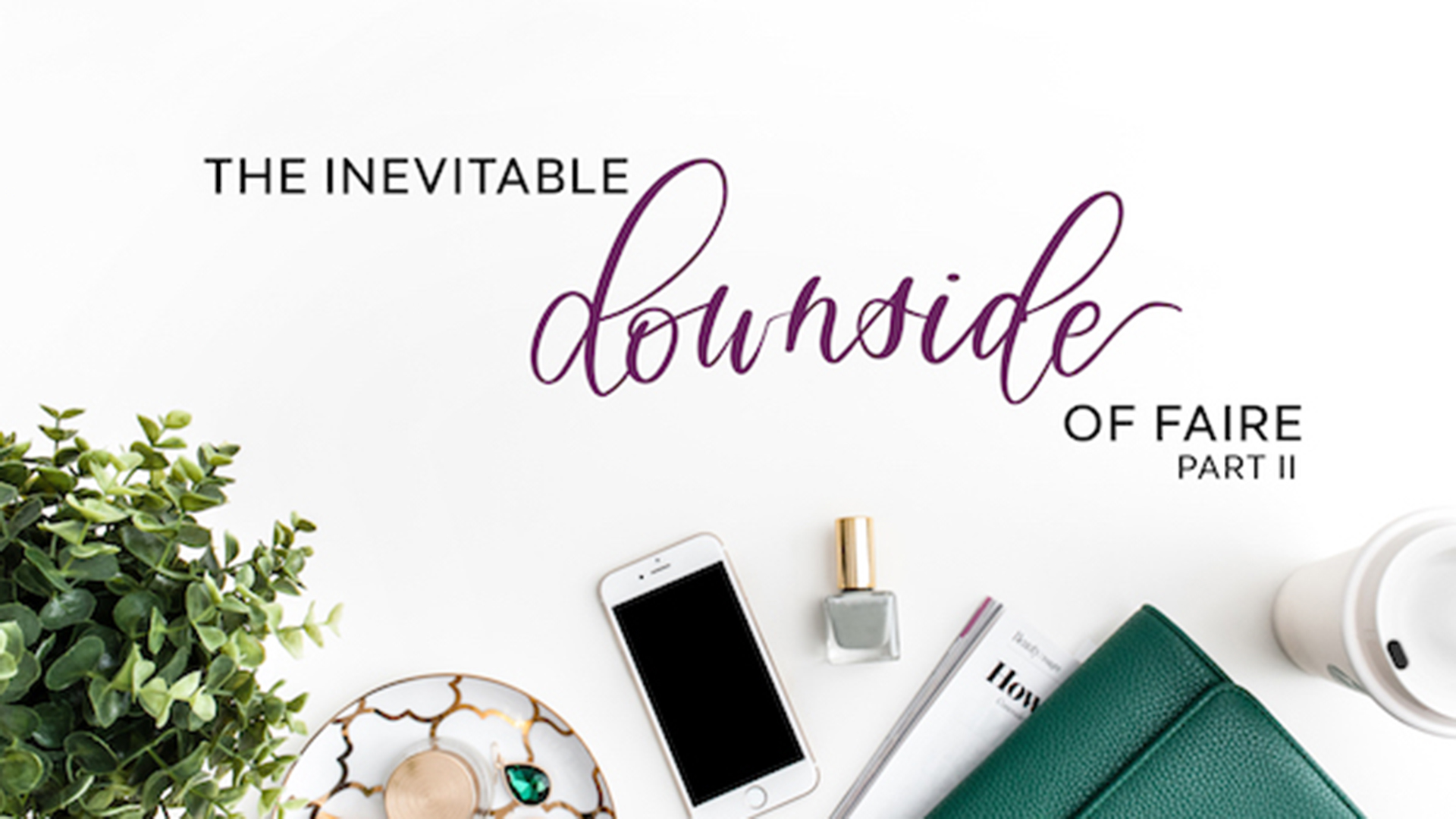
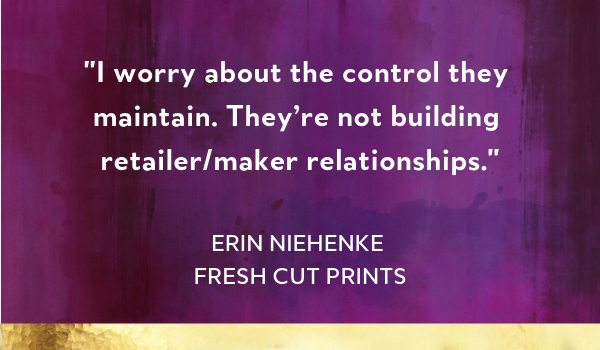
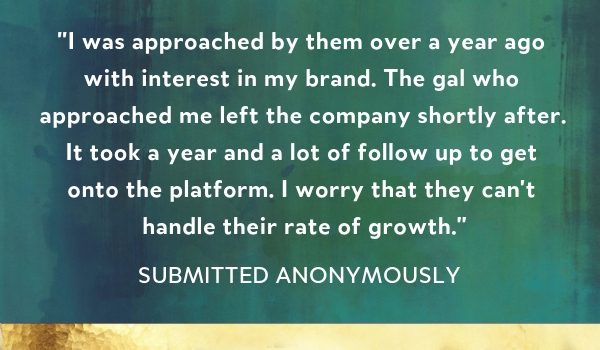
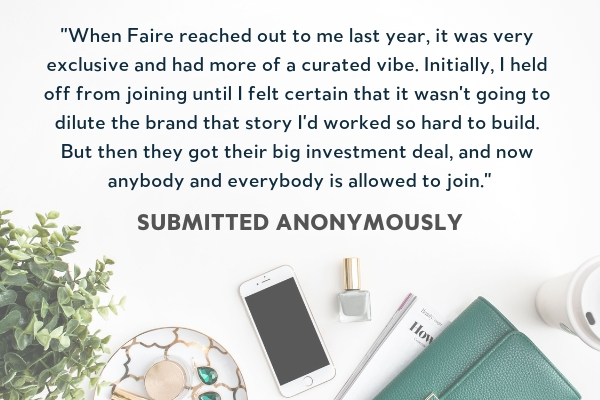
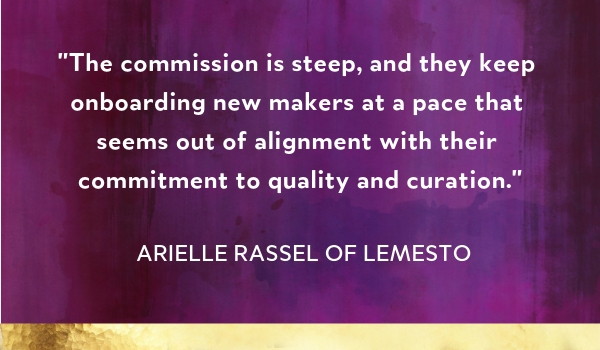
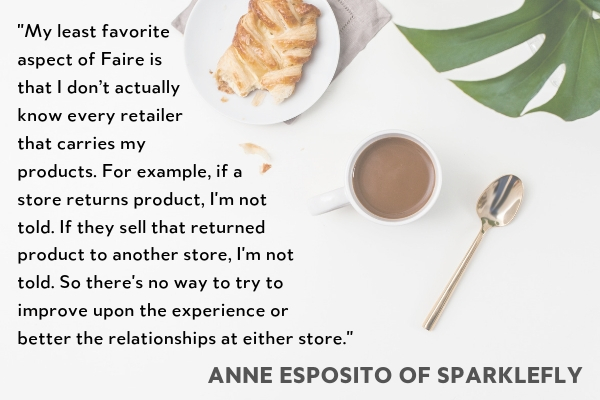
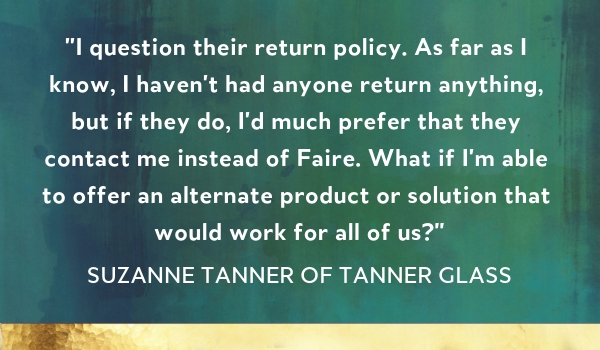
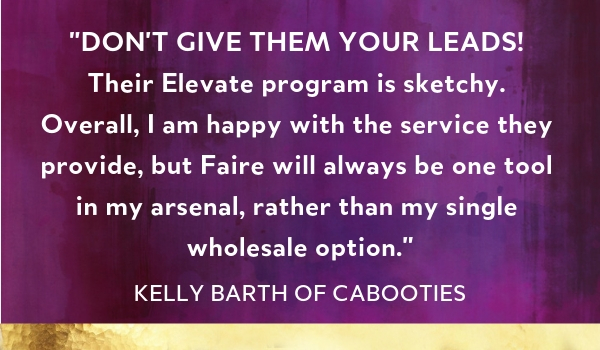
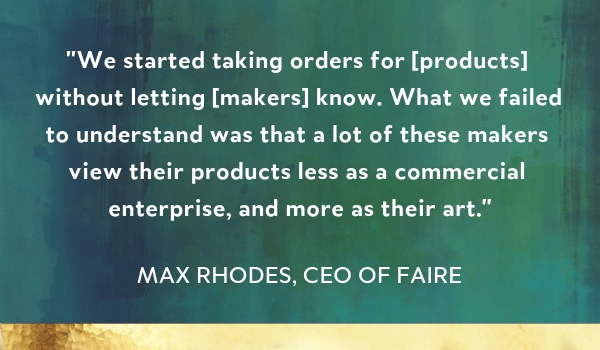
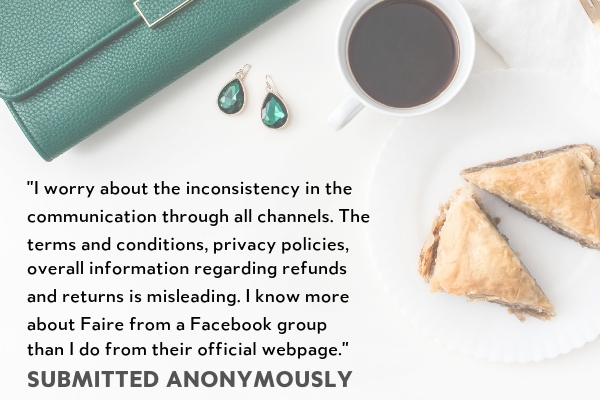

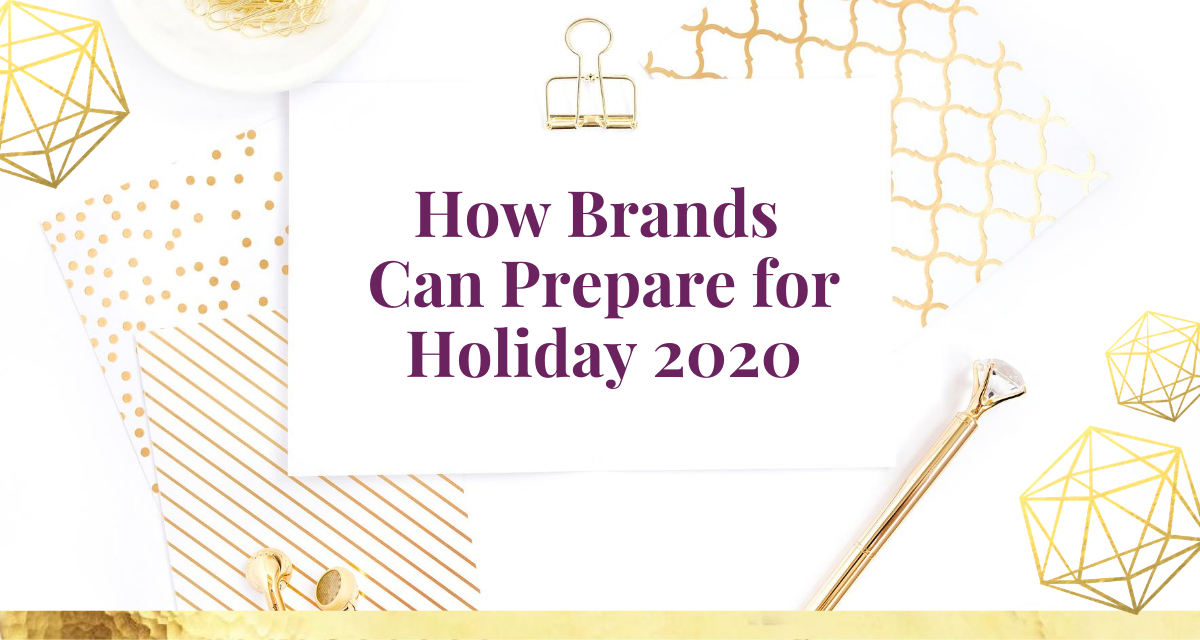

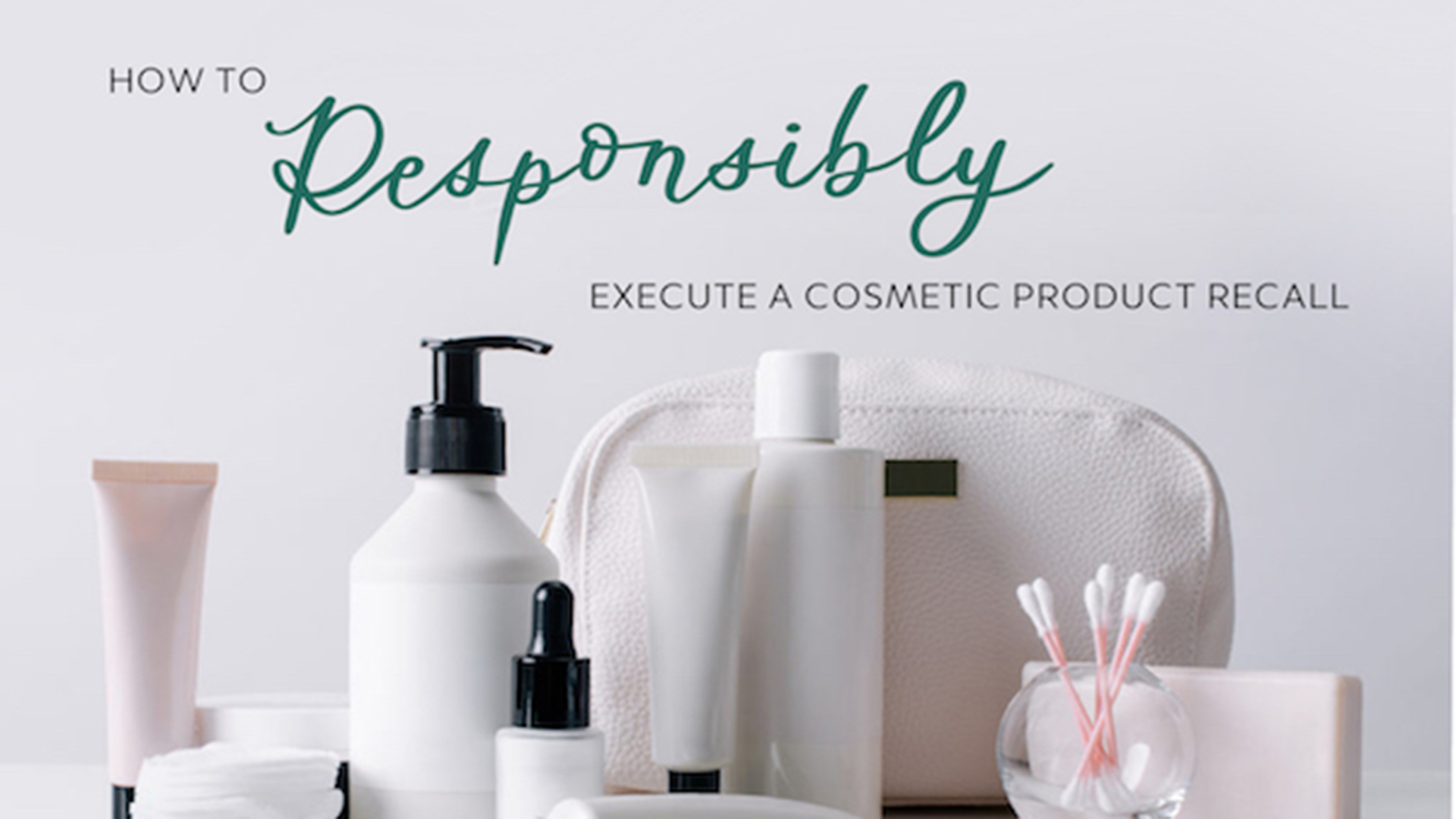
This is all so incredibly eye opening. Thanks for digging into this.
Wow. I had no idea. I’m getting far more business through faire than I have on my own. The risks you outlined are scary, but it’s definitely helped my business grow.
Do I understand it right that as a retailer I can order 100 items and send back 20 items of that order? I mean this sounds a little bit awkward to me… because Faire is forced to take back the order and if they cannot sell it through their platform they be stuck with the goods.. or does the makers take back the order as well? But when a maker uses the Faire payment and get paid directly, they need to refund the money or?
Would be great hearing from you !
Cheers
Bob
So informative, as always, Lela! Thanks for all your hard work!!
Beware of Faire! They have recently begun charging retailers for merchandise that is returned and claiming it is “damaged without any specific information or pictures to support this. Retailers are out the product and are then charged for the “damaged” goods—that somehow end up in the sale section or mix and match.
I had this happen to me too. I am so upset about this. They charged me without warning and refuse to return the items back. They stated that they usually put the items up on maker’s market or “donate” them. I am now out $400. It seems like they are trying to pinch money from both sides. If I paid for the items, I should get it back and they have no right to keep it. It’s so hard to talk to Faire because there is no contact number, only email. They have a take it, or leave it attitude.
Pingback: Why wholesale Marketplaces will be the end of your brand and business - TURIS
Pingback: En online markedsplads kan blive enden på dit brand - TURIS
Is there a standardized expectation for how sellers package goods to ship to buyers. For example: If I sell dog leashes would it be expected that I package them onto a backing that is ready to hang. Or would a simple cello/zip bag suffice, so that the buyer can package them as they please?
Faire has the worst customer service. The fact that you can never speak to a human over the phone is shocking, and results and many unnecessary emails back and forth because the reps rarely answer the actual question asked completely. They seem to be deliberately vague and unspecific so you have to ask five more times
Please help me figure out how to turn off the zip code protection! THANK YOU!